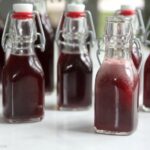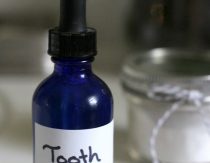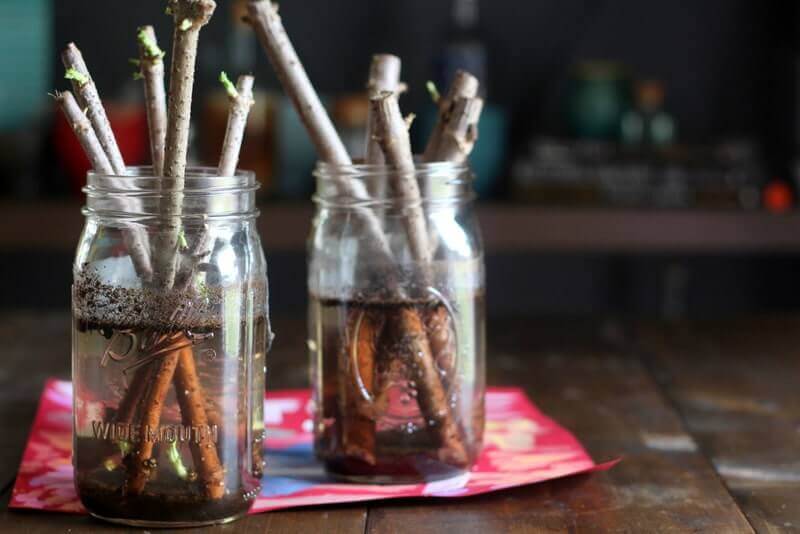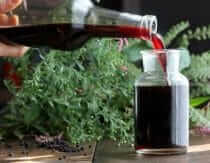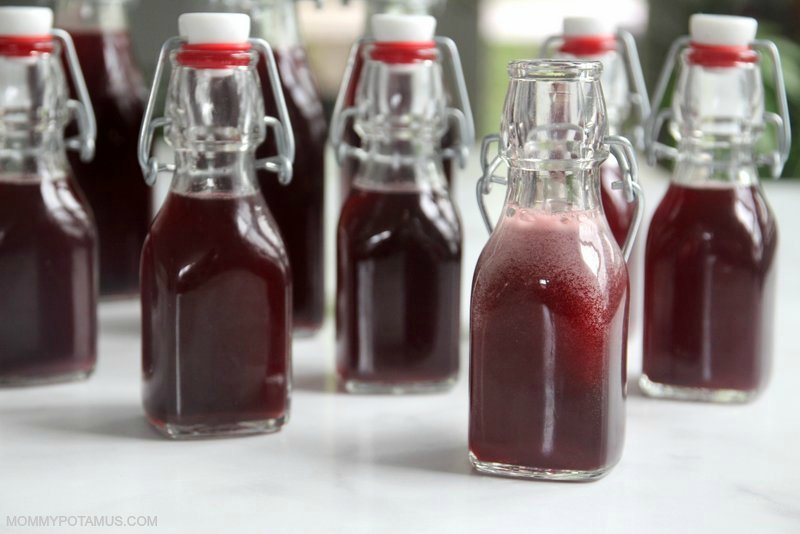
Fizzy elderberry soda is a delicious way to support immune function naturally, and I’m going to share with you two simple methods for making it. One is naturally fermented and chock-full of probiotics, and the other is a five minute version that you can make with elderberry syrup, sparkling water and an optional splash of citrus.
If you’ve ever made anything with elderberry before – gummies, tea, syrup, even homemade jam – you probably already know all about its beneficial properties. It’s often taken daily (or nearly so) to support immune function during cold and flu season. Among its many benefits, elderberry is thought to have a positive impact on:
- Vitamin C Absorption – It contains bioflavonoids that help us absorb vitamin C, which is an essential nutrient for immune function and other processes like collagen synthesis. (1)
- General Immune System Support – Studies done in Norway, Australia and Israel found that participants experiencing cold and flu symptoms felt better sooner (and had milder symptoms) when they received elderberry extract.
- Respiratory Health – According to The Herbal Apothecary, “Elder is supportive to the respiratory system, with its ability to open the body, induce mild sweating (flower and leaves), reduce fever” and support the body’s natural clearance of phlegm.
- Antioxidant Status– Contain a flavonoid called anthocyanin, which has antioxidant and immune supporting properties. (2)
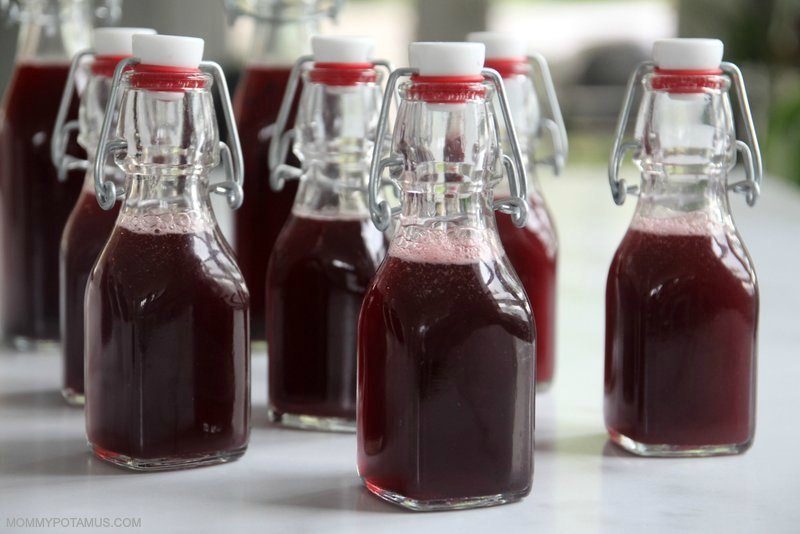
Two Methods for Making Elderberry Soda
If you’ve got elderberry syrup and a sparkling mineral water like S. Pellegrino on hand, you can make elderberry soda in two shakes of a lamb’s tail. La Croix will work, too – check the notes section of the recipe below for full instructions.
A second option is to make probiotic-rich elderberry soda by fermenting it. It’s super easy with the help of a ginger bug starter, which can also be used to make homemade ginger ale and root beer.
If you’re not familiar with what a ginger bug is, it’s a living probiotic culture that’s made by feeding wild yeast and beneficial bacteria that naturally occur on the papery skin of ginger root. We named ours Yeasty Beasty.
To make elderberry soda, all you do is mix the ginger bug with sweetened elderberry tea, pour the mixture into flip-top bottles, and let the carbonation build naturally for several days. Bottles with tight fitting lids (such as the flip-top bottles belos) are best for creating a pressurized seal that holds in the carbonation, so I recommend using them if you want fizzy soda.
Choosing Your Flip-Top Bottles
This soda recipe will fill approximately:
- 17-18 of these 4 ounce swing top bottles
- OR 8-9 of the these 8.5 ounce swing top bottles
- OR 4-5 of these larger swing-top bottles.
If you don’t have swing top bottles and prefer to use what you have on hand, opt for a jar that seals well when the lid is on.
Fido jars or Weck jars are a good option, but mason jars will work, too. Elderberry soda that is fermented in jars won’t be very fizzy (if at all), but it will still be probiotic-rich and delicious.
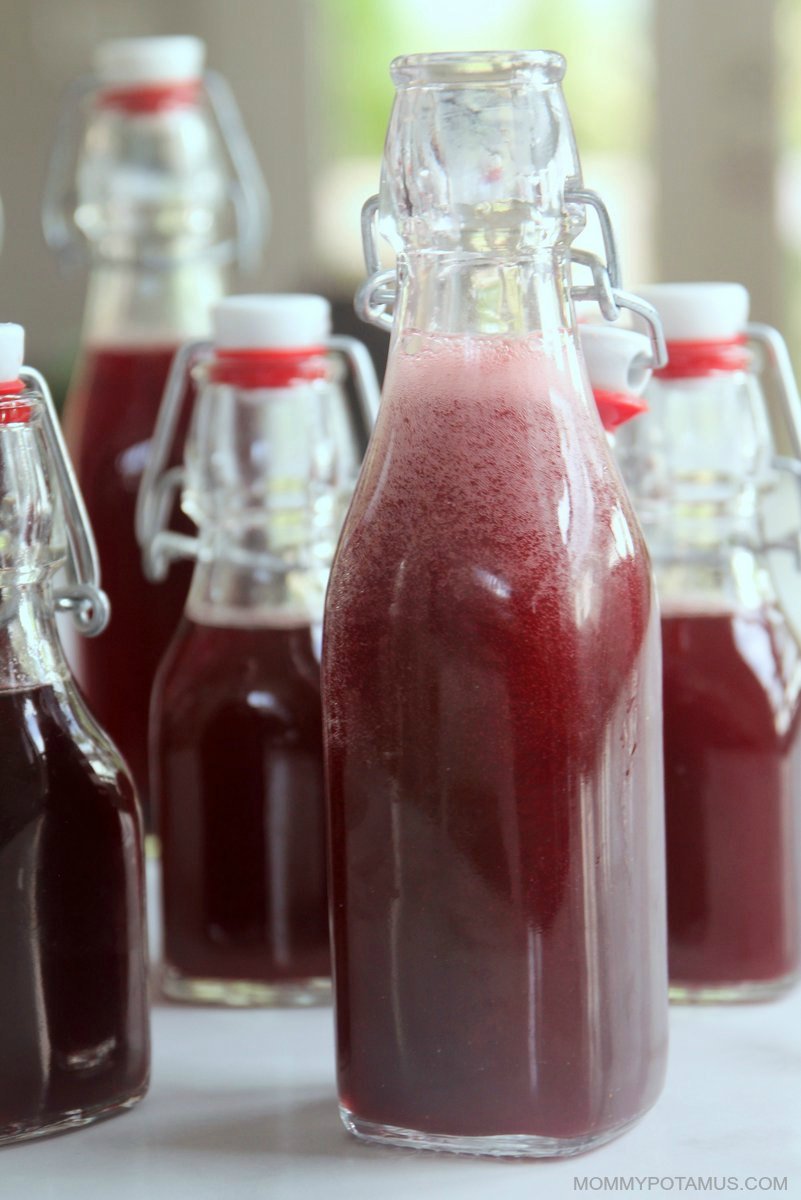
Probiotic-Rich Elderberry Soda Recipe
Equipment
- See notes sections for suggested bottles
Ingredients
- 8 cups filtered water (chlorine kills the beneficial yeast and bacteria)
- ⅔ cup sugar (Organic white sugar or unrefined sugar will both work)
- 4-6 tbsp dried organic elderberries
- 2 tbsp dried hibiscus (optional)
- ½ cup ginger bug starter
- ⅓ cup lime juice or lemon juice (optional)
Instructions
- Place the water, dried elderberries and sugar in a pot and bring to a boil.
- Reduce heat to low/med and simmer for 20 minutes, then remove from heat. Stir in the hibiscus (if using).
- Set the elderberry tea aside and allow it to cool to room temperature. Keep in mind that if it's too hot when you add the ginger bug, it will kill the beneficial yeast and bacteria needed for fermentation.
- Place a mesh strainer over a bowl and pour mixture into it to separate the herbs from the liquid.
- Measure the liquid and add filtered water as needed to bring it back to 8 cups.
- Add the ginger bug and lime/lemon juice (if using) to the liquid and mix with a wooden spoon.
- Pour the elderberry soda into flip-top bottles (leaving one inch of head space) and ferment for 3-6 days. During the fermentation process, you'll want to "burp" the bottles by opening them every 1-2 days so the carbonation doesn't build up too much. Some people have reported that their bottles exploded because they let them ferment for way too long without burping them. I've been making water kefir and other fermented sodas for years and have never had that happen, but I have forgotten about them for a few days and ended up with an extra fizzy bottle that poured out like champagne. I open my bottles on the deck by our kitchen now just in case. 🙂
- The elderberry soda is ready when it's fizzy and not overly sweet. If you check it after a week and it's still too sweet, you can let it ferment for a bit longer so that the good guys can consume more of the sugar and turn them into probiotics.
Notes
Nutrition
How To Make 5 Minute Elderberry Soda With Sparkling Water
Ingredients
- 1 tablespoon plus 1.5 teaspoons homemade elderberry syrup (Or pre-made. I like this kind which is made with organic elderberry and other clinically supported ingredients like marshmallow root and echinacea.)
- 1 cup sparkling water (S. Pellegrino, Perrier and LaCroix will work)
- squeeze of fresh lemon or lime juice (Optional)
Instructions
Elderberry soda is most refreshing served cold, so I recommend either chilling the sparkling water in advance or serving it over ice. To make, just pour the sparkling water in a glass, add the elderberry syrup (and a squeeze of lemon or lime if you have it on hand) and stir until combined. Pour over ice if desired and serve.
Frequently Asked Questions
Yes you can, but you’ll want to make the tea using a slightly different method. Roots and berries need to be simmered for awhile to extract their goodness, while flowers just need to be added to hot water.
To make elderflower tea, bring the water and sugar to a boil and remove the pot from heat. Stir the elderflowers in, place the lid on the pot, and allow the tea to cool to room temperature before straining.
Uncooked elderberries contain a compound that can cause nausea and GI symptoms. Heat breaks down the compound so that it doesn’t cause issues, so I only recommend using tea.
Technically you could heat the fresh elderberry juice to deactivate the compound, but since I have not done it personally I can’t advise on the best approach.
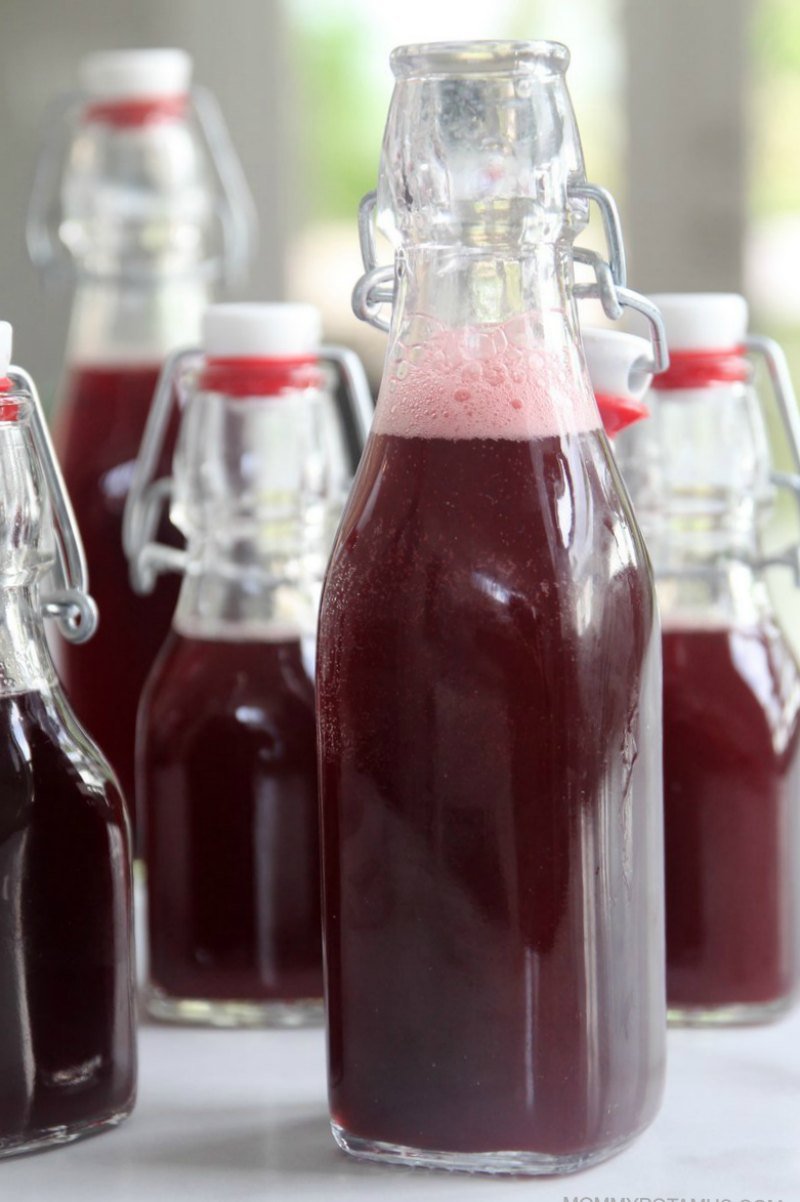
Sources
- Jones, E et. al. (1984) The influence of bioflavonoids on the absorption of vitamin C
- Özgen, Mustafa (2010) Total phenolic, anthocyanin contents and antioxidant capacity of selected elderberry (Sambucus canadensis L.) accessions

